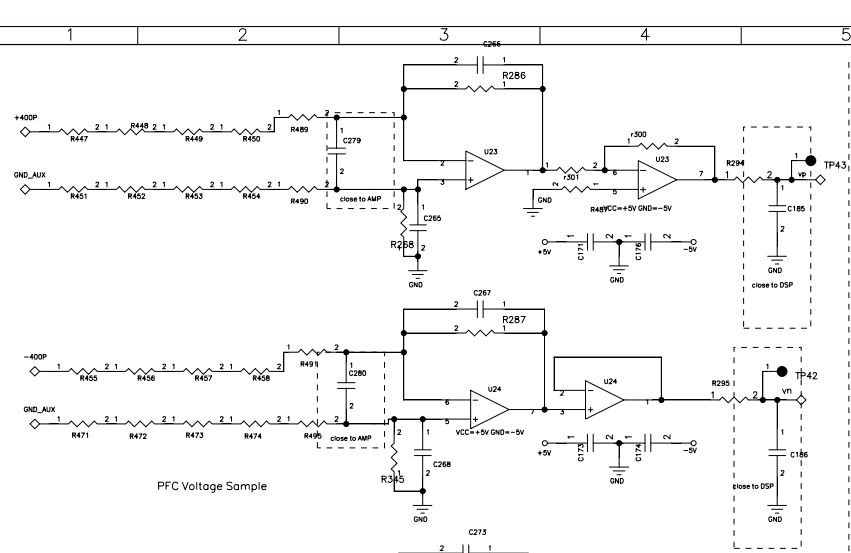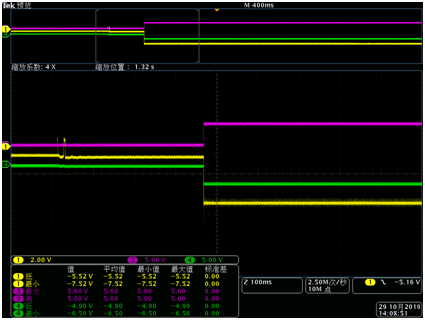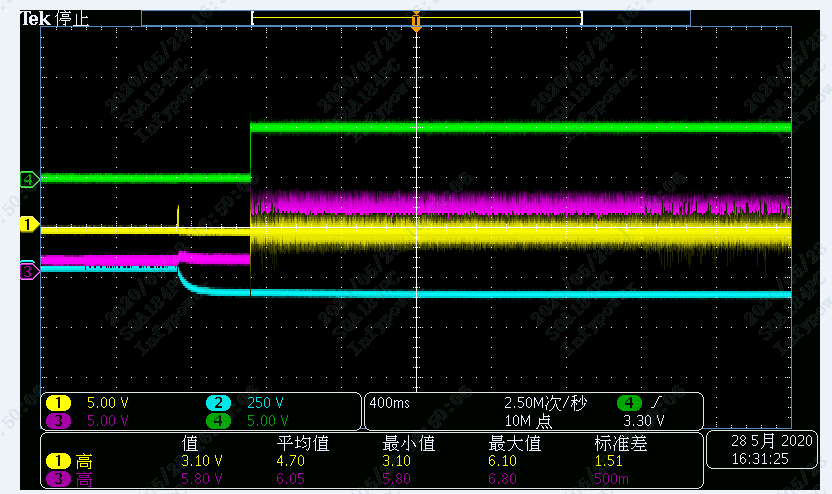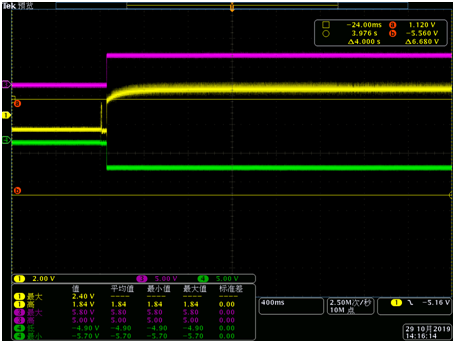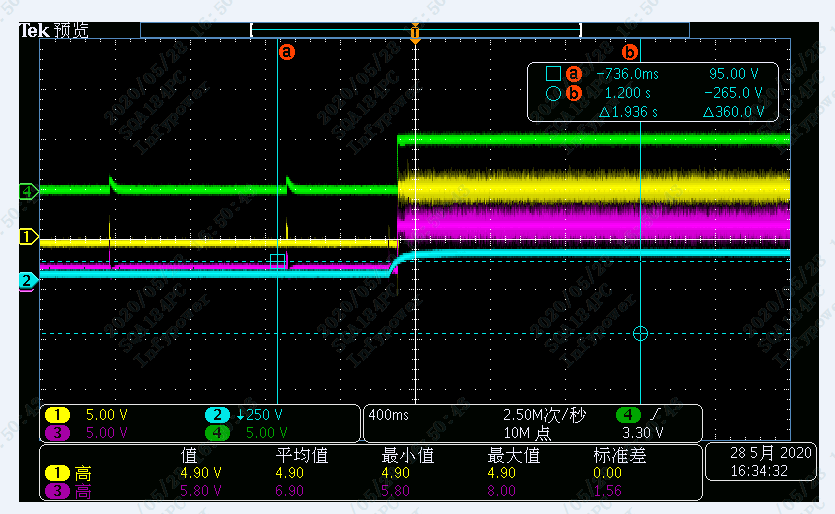Other Parts Discussed in Thread: UCC28C45, , LM358
Hi,
customer's main power stage is as below:
And the sampling circuit to sense +VDC(up to +400V max) and -VDC are shown below:
U24 is LM358B, the power supply is ±5V。±5V is generated through UCC28C45 from +VDC. So GND is isolated from GND_AUX.
The first time we connect 3 phase AC input to grid, we measured the waveform as below:
purple- +5V supply, yellow- pin7 of U24, green- -5V supply.
The output of the OPA pin 7 should be -250*(-5.6k/850k)=1.64V which should be positive, but we get negative output with pin 7.
green and purple- power supply, blue- -VDC(-400P in the schematic), yellow- pin 6 of U24.
We can see that -VDC signal comes before ±5V is supplied to OPA.
And then we disconnect AC input, wait for DC BUS decrease and aux power for ±5V for LM358B shutdown, and then we reconnect AC input. This time the output is normal as shown below:
yellow- pin7 the other 2 are ±5V.
we also measured pin 6(yellow) and -VDC(blue, it's reversed so the waveform is positive).
-VDC is measured by differential probe connecting to GND_AUX and -VDC.
This time we can see that -VDC signal comes at the same time with ±5V power supply.
So it seems that the problem is caused by -VDC comes before the power supply of OPA. But according to the waveform, pin 6 is 0V before ±5V is supplied to LM358B, which doesn't go beyond the recommended operating conditions.
Why would LM358B behaves abnormal in such situation?
The customer is always using AS358 and it doesn't have such problem.



